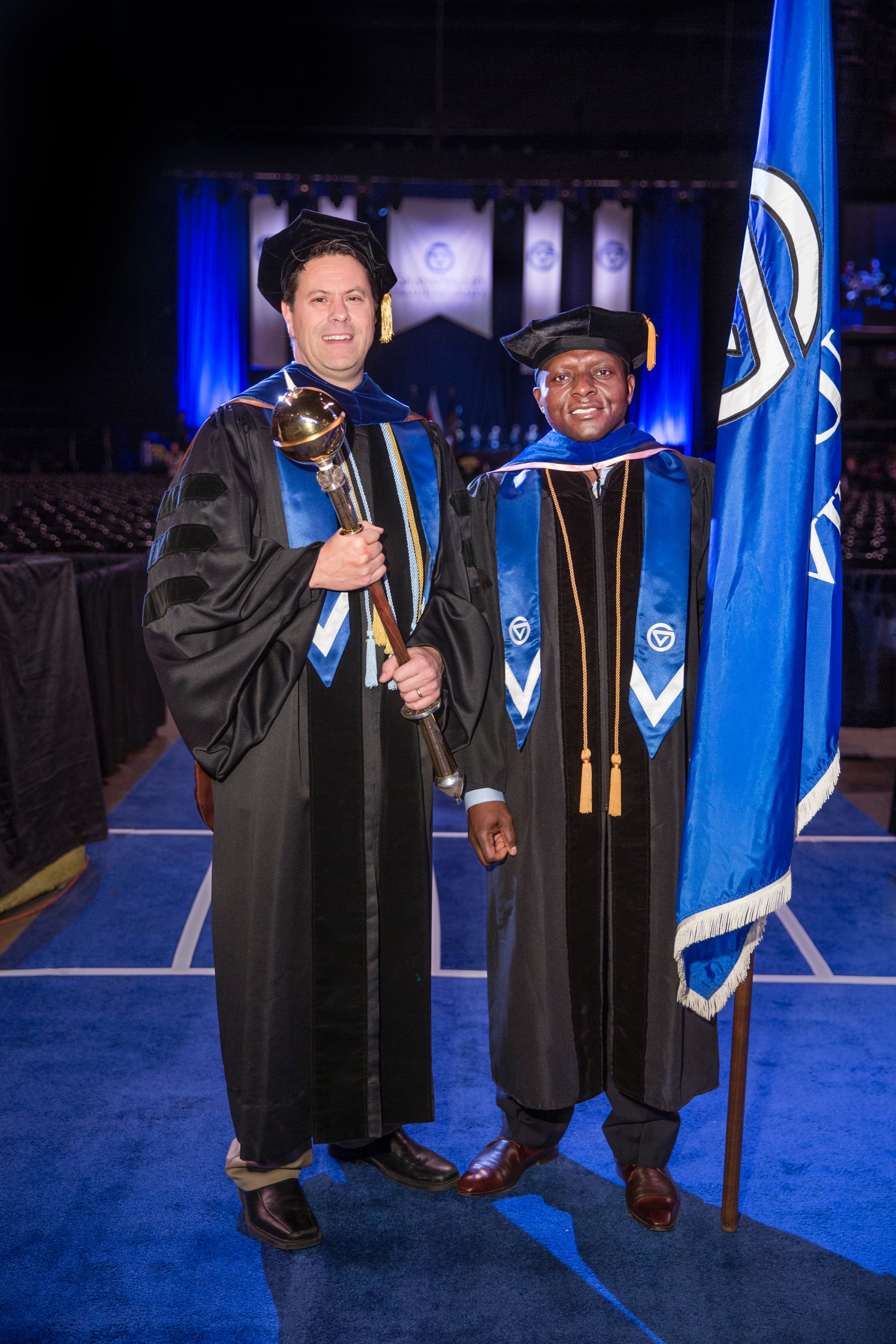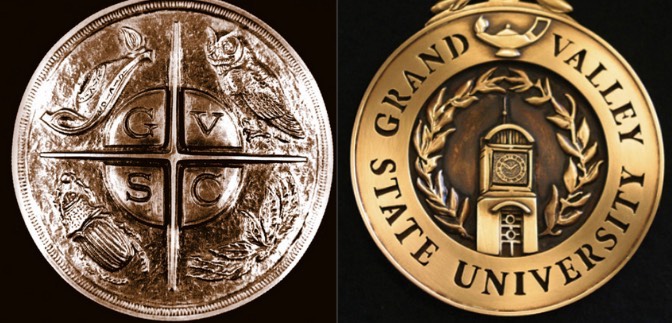Traditions of Inauguration
What is an inauguration?
Simply put in higher education circles, inauguration is the event or events surrounding the presentation of a new president. Investiture is the actual formal ceremony conferring the authority and symbols of high office and the installation is the actual time during the investiture ceremony when the authority is conferred.
Processional and Recessional
Formal academic ceremonies often include a processional. The processional marks the beginning of a ceremony and consists of academic leaders and delegates from other colleges and universities, delegates from learned societies and organizations, deans, the faculty, staff, trustees of the university, speakers, other dignitaries, representatives from the senate, and the officers of the university. The processional is led by the university mace and the colors of the university.
A recessional is the same as the processional but marks the end of the ceremony. The participants of the processional are the same participants of the recessional and lead the way out of the ceremony.


Academic Regalia
The distinctive and colorful gowns worn during academic ceremonies originated in medieval European universities. In the 14th century, their use had become so common that universities, including Oxford University in England, required their faculty to wear them in public places. Gowns may have been necessary for warmth in the unheated buildings used by medieval scholars, or they may reflect the strong ties that existed then between academic and religious institutions.
In the late 19th century, American universities formed a commission that prepared a code for academic costumes. That code has been updated and is used today by most colleges and universities. Academic dress consists of a gown, cap, and hood, which indicate the degree held by the wearer and the college or university that awarded that degree.
Gowns
The gown for the bachelor's degree has pointed sleeves and is worn closed in front. It may be black but is often the color representing the university. The gown for the master's degree is typically black and has longer oblong sleeves, with a large section that hangs below the wrist. The doctor's gown is very full and has large, full sleeves. The front is trimmed in velvet, and there are three bars of velvet on each sleeve. The velvet may be black or may be the color of the wearer's degree. Although the standard doctor's gown is black, many American universities have adopted gowns that have one or more of the school colors.
Hoods
Master’s and doctor’s degree holders wear a hood draped over the shoulders and back. The satin lining of the hood is in the colors of the college or university that granted the degree. They are trimmed in velvet of a color that signifies the wearer’s degree. Some common colors you might see in the procession are:
- Agriculture – Maize
- Arts, Letters, Humanities – White
- Commerce, Accountancy, Business – Drab
- Dentistry – Lilac
- Economics – Copper
- Education – Light Blue
- Engineering – Orange
- Fine Arts – Brown
- Foreign Service – Blue
- Forestry – Russet
- Journalism – Crimson
- Law – Purple
- Library Science – Lemon
- Medicine – Green
- Music – Pink
- Nursing – Apricot
- Oratory (Speech) – Silver Gray
- Pharmacy – Olive Green
- Philosophy – Dark Blue
- Physical Education – Sage Green
- Public Administration – Peacock Blue
- Public Health – Salmon Pink
- Science – Yellow
- Social Work – Citron
- Theology – Scarlet
- Veterinary Science – Gray

A holder of the Doctor of Philosophy (Ph.D.) degree wears the dark blue of philosophy regardless of their specialty.

Caps
Also know as a mortarboard, caps complete the academic costume. The standard cap is flat and square with a tassel fastened to the center of the stiff top. Bachelor's and master's tassels are black or the color of other gown. Doctor's tassels are shorter and gold. Once the bachelor's degree is conferred, the tassel is worn on the left. Many doctorate degree holders will wear a tam in place of a mortarboard. The tam is either six or eight sided, made of velvet, and is soft.
The Mace
The role of the mace bearer is ceremonial, deriving from medieval times in England when officials taking office or opening their courts felt the need for protection. Since the 16th Century in England, and in America since colonial days, it has been a symbol of office only.
In academic ceremonies, it is carried by a distinguished member of the faculty who usually precedes the entire procession. Its placement in, and removal from, a designated place of honor signifies the opening and closing of ceremonial sessions.
The Grand Valley State University mace was used for the first time in the 1983 commencement ceremonies. The mace was designed by Beverly Seley, professor emeritus in the Department of Visual and Media Arts at Grand Valley State University, and executed by students in her metalsmithing class.


Presidential Medallion
Grand Valley’s first presidential medallion depicts the University Seal - a circle divided into four sections that symbolized elements of academia:
- An owl, representing wisdom;
- A laurel wreath, representing truth, integrity, and justice;
- A scarab beetle, representing tenacity and hard work; and
- A lamp, representing knowledge.
The presidential medallion was redesigned and presented at the investiture of President Thomas J. Haas in 2006. It was designed and created by Beverly Seley, professor and designer of the GVSU mace.
Alma Mater
When translated into English from Latin, Alma Mater translates into "nourishing or bountiful mother." This phrase is used to affectionately describe one's college or university. The Alma Mater is also used as the name of the official song of the school. Grand Valley Sate University's Alma Mater is titled "Hail to Thee Grand Valley."
Hail to thee Grand Valley - We're loyal, steadfast, true.
Praise our Alma Mater - We pledge our faith to you.
Keep your banners flying, black and white and blue.
We sing to thee Grand Valley. United we're for you!
